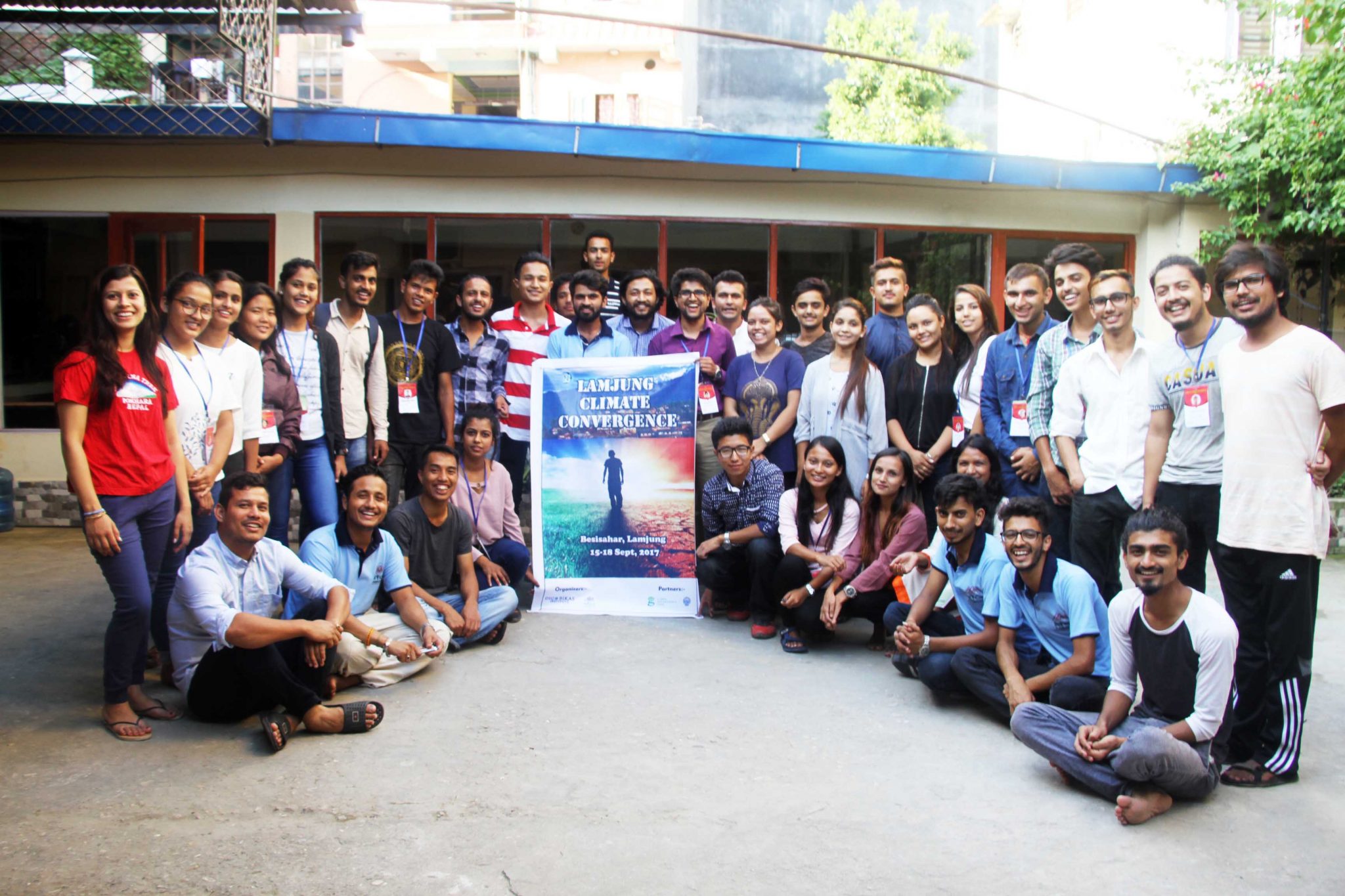Lamjung, September 20, 2017: Enthusiastic youths from the western part of the Nepal gathered in Besisahar to attend Lamjung Climate Convergence this September 15-17, 2017. Altogether, 27 youths took part in the program where they got to learn about the ways to build strategies, understand present climate change scenario, campaigning of events and cope up continuously changing climatic pattern.
The main objective of the convergence was to share the information on climate change issues, its policy with proper mitigation and adaptation method and ultimately to develop leadership quality within participated youth.
The convergence was facilitated by renowned trainers and resource persons from various organizations.
In the program, Sahil Shrestha, President of Clean Cycle City presented on ‘Development and climate change, Alternative thoughts. He also collected the views of all participants on cause, problem and solution of climate change at local level.
Similarly, Pradip Bhattarai, Programme Officer, Prakriti Resource Centre, made a presentation on ‘Environment and Climate Change in Nepal: Response to climate change from community to national level’.
Likewise, Campus chief of IAAS, Lamjung Campus educated the participants about ‘Climate Smart Agriculture’ including the threats of climate change on agriculture.
Meanwhile, Abhishek Shrestha, President, Digo Bikash Institute, facilitated the panel discussion joined by Megendra Pokhrel (DDC, Lamjung), Janak Mishra (Mayor, Sundarbazar) and Dal Bahadur Majakti (NGO Federation) where they shared their current roles and future plans.
Along with the training sessions, convergence also involved entertainments, energizers, experience sharing and group working sessions. Two documentaries: ‘Destruction’ and ‘The Economics of Happiness’ were also screened on the occasion.
As the program was concluding, participants formed district-wise groups and planned to initiate climate awareness programs at the local level.
In a nutshell, the program provided an opportunity to meet enthusiastic youths, discuss on climate issues and make new friend circles to work on initiating climate awareness campaign in their own community.







